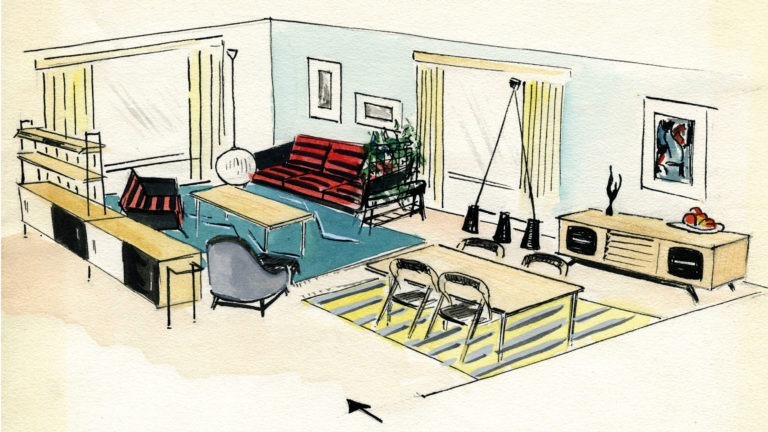“Inspiration is a worn-out word,” says Mia Lundström, who has worked with everything from the IKEA catalogue, to IKEA store showrooms and concrete furnishing tips in books. However, hearing the word ‘inspiration’ still makes her wary.
Inspiration
… is a worn-out word.


Who doesn’t want a perfect home? Magazines and social media bombard us with inspiring pictures of beautiful luxury interiors. But who can afford to live like that? Instead, IKEA wants to inspire people with smart solutions to everyday challenges.

“A castle interior can be inspiring, for example,” she says, “but it’s completely unrealistic for the vast majority of us. We’re never going to live like that. At IKEA, we want to inspire customers with solutions that people can actually achieve, both practically and financially. If you can’t afford a whole new kitchen, maybe you can be inspired to put up some hooks for kitchen utensils and tea towels on the wall. That way you feel it’s an achievable goal, something you can afford.”
When Mia once asked people which picture they found most inspiring in a catalogue, many pointed to a photo of some shelves under the stairs. They had never thought about using the space in that way, so it inspired them to come up with similar smart solutions in their own homes.


“People should feel that we understand their circumstances,” she says. “Whether they live in Mumbai or Stockholm, people have roughly the same problems: there’s a pile of trainers in the hall and not enough room in the kitchen. We want to pass on professional knowledge that makes everyday life easier for people: how they can live life at home in the best way, what’s good for children, how to organise living in a compact space. We want to show that we understand what things are like for them and offer some good solutions, not judge their taste.”
And that’s how she likes to think of inspiration: like a form of recognition. As customers at IKEA, people should feel that the company understands their needs and offers solutions that make everyday life easier – and also a bit more beautiful.

“Using blankets, flowers and candles, we can create an atmosphere that feels inspiring,” Mia explains. “But the fundamental principle is always function. We work with solutions, not appearances.”
There is also the risk that people feel they can’t live up to the expectations of the world around them.
“What if it doesn’t look as nice at home as it does in the picture? A lot of people feel they have to design their home based on what other people think. They look at their home through other people’s eyes. What was intended as inspiration can then instead create a kind of stress, or fear. The thing that has made us successful is that we’re constantly striving to understand people’s everyday lives, and want them to feel included.”


Until recently, the IKEA catalogue was the company’s most important channel for inspiring potential customers. Today, however, inspiration flows through all kinds of other channels, including social media, and the image has never been more in focus.
“Yes, the image is certainly very central nowadays,” says Mia, “both on our website and in social media. The drawback is that an image can distort the focus and take a product out of its context. But on the plus side, you can tell a more in-depth story in the text beneath the image, which you can’t do in the store. On social media we can talk about our thinking, go into the story in more depth and show more dimensions to a product. We want to convey knowledge and inspire our customers in a professional way – or as we say at IKEA, ‘A better life at home is defined by the many people and figured out by us’.”




